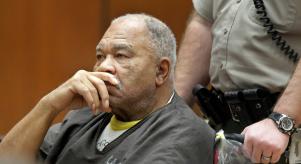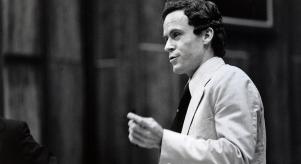
Episode 7: Under the microscope
The penultimate episode of Robbie Coltrane’s Critical Evidence Sundays 10pm aired last night, so it’s that time again, where we take a closer look under the microscope...
One brutal murder committed against an elderly isolated man, but with no clues to piece the puzzle together bar one, a bloodied imprint of an axe head on a chair cushion, but no axe to be found. However one tiny fragment of critical evidence was found, in the wounds that Fred Maltby had sustained at the hands of his murderer, which were tiny pieces of paint from the head of the axe. But it wasn’t enough to go on as investigators had no axe to link it with and so the case slipped by the wayside.
It wasn’t until a second more aggressive murder of a well known small town bookie, with the weapon in question being an axe, that the case took an unexpected turn. Now this was more than just coincidence and so the two murders were linked and the case reopened. The motive was becoming more established, one that had been surmised after Maltby’s murder but was confirmed after Joe Rylatt’s murder, as his safe had been emptied of £3000.
So now police had a motive and two murders linked by the same murder weapon and flecks of industrial zinc based paint, unfortunately they still didn’t have the physical axe in their possession.
As with the majority of murder cases, it was the public that ended up providing investigators with the critical piece of evidence – the axe! Two young boys playing by a lake had stumbled across it, hidden amongst tall grass and had handed it into police. Again, this was more than mere coincidence, (a word not in the policing manual).
There were no prints on the axe however, the water had cleaned it of all evidence, the only element that remained was the same industrial paint that was found embedded in both Maltby and Rylatt. So far this had provided no solid leads, but by a stroke of luck, after returning from the forensics offices to check the axe they came by the British paint research foundation, where a more detailed scientific process was performed on the paint flecks recovered from both murder scenes. This yielded information that took police to Germany, where the paint was exclusively manufactured. In turn it was only bought by one supplier in the UK, which just happened to be within a mile of both murders.
Detective Clifton and his team now had 80 or so names, which they had to narrow down to just a handful. Finally police had something to get their teeth into, interviewing potential suspects and piecing the picture together. This lead them to a shop of only 12 employees that was sold the very unique paint, one of whom was Denis Granville Smalley!
Police had to keep digging.
Police believed him to be their prime suspect, he had access to the paint, was a local man, but it still wasn’t beyond reasonable doubt so police had to keep digging. A search of Smalley’s property unearthed cans of the paint, though again this was not concrete evidence, police needed a motive. So it came down to the oldest technique in the book, walking the streets and knocking on doors, a nosey neighbour, the town butcher, anyone that may have known Smalley or seen anything to reveal what he wasn’t telling police.
The first connection they were able to draw from this was that Smalley and Rylatt knew each other, as Rylatt had been loaning him money to keep him afloat, which he had failed to pay back. Police now had motive, as the murderer had stolen money from Rylatt’s bookmakers shop and days later Smalley had some how found £3000 to pay off a portion of his debts.
The only thing counting against this motive was Smalley’s alibi, which for to all intents and purposes seemed watertight - He had been babysitting during the times at which Rylatt had been murdered, so it couldn’t be him.
Police had too much on him to simply accept that and this is where the neighbour was able to provide investigators with more than just mere partial remembering, but an entire notebook. She had noticed that Smalley would often leave his children unattended to go out, so she took it upon herself to record everytime this happened. It just so happened that on the night of Joe Rylatt’s murder she had recorded Smalley leaving his home and returning hours later, the exact time frame in which Joe Rylatt was murdered.
His alibi had been proven a complete lie, he had clear motive and a connection to both Rylatt and Maltby, with the paint and axe being the last pieces of the puzzle. His crimes had been motivated by the hope of financial gain to try and get out of his current debt situation, but his methods to obtain this was to commit two brutal and unprovoked attacks and so the case of the “Double Axe Murderer” was brought to a close.




